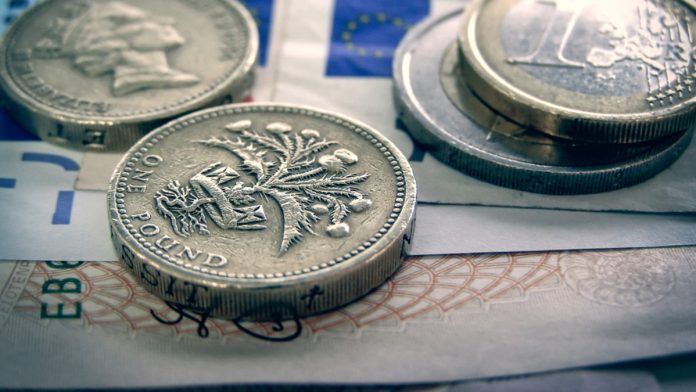Concerns over the health of the UK economy pushed the pound lower on Wednesday. The pound euro exchange rate declined by 0.3% to close the previous session at €1.1226. The pair is advancing in early trade on Thursday.
UK construction activity data showed that the Brexit squeeze continues to take its toll on the sector. Construction sector output contracted for a fifth straight month in September amid ongoing Brexit uncertainty and weak demand. So far, UK manufacturing and construction data have shown contractions raising fears of a recession in the UK in the third quarter.
The pound chose to ignore Brexit developments in the previous session. Prime Minister Boris Johnson finally revealed the plan that he believes will end the three years of Brexit agony. The plan to avoid the contentious Irish backstop involves the creation of two new borders; a customs frontier in Ireland and a new regulatory border between Northern Ireland and the rest of the UK. So far, the plans have been well received by Eurosceptics and the DUP meaning a united Parliament behind the plans; however, they fall short of the EU’s requirements.
EU Chief negotiator Michel Barmier said that progress is being made on Brexit. However, he also warned that a lot of work remained to be done. Further meetings between the EU and the UK will take place over the coming days. Any signs of an agreement could boost the pound.
| Why is a “soft” Brexit better for sterling than a “hard” Brexit? |
| A soft Brexit implies anything less than UK’s complete withdrawal from the EU. For example, it could mean the UK retains some form of membership to the European Union single market in exchange for some free movement of people, i.e. immigration. This is considered more positive than a “hard” Brexit, which is a full severance from the EU. The reason “soft” is considered more pound-friendly is because the economic impact would be lower. If there is less negative impact on the economy, foreign investors will continue to invest in the UK. As investment requires local currency, this increased demand for the pound then boosts its value. |
In addition to Brexit, pound investors will look ahead to today’s service sector activity data. The service sector is the dominant sector in the UK so any slowdown here could have a significant impact on the pound.
Euro Investors Look To Eurozone Retail Sales
The euro traded broadly in favour in the previous session despite a ruling by the World Trade Organisation that the US could apply tariffs to the tune of $7.5 billion dollars to European goods. This comes following a decade old case between the US, EU Airbus and Boeing. Should the US apply the tariffs, this would be bad news for the fragile eurozone economy and trade relations.
Today investors will look ahead to eurozone retail sales data. Analysts are forecasting that sales picked up 0.3% month on month in August. This would be an improvement on July’s -0.6% decline. Any signs that the consumer sector remains resilient despite the slump in manufacturing could boost the euro.
| What do these figures mean? |
| When measuring the value of a pair of currencies, one set equals 1 unit and the other shows the current equivalent. As the market moves, the amount will vary from minute to minute.
For example, it could be written: 1 GBP = 1.13990 EUR Here, £1 is equivalent to approximately €1.14. This specifically measures the pound’s worth against the euro. If the euro amount increases in this pairing, it’s positive for the pound . Or, if you were looking at it the other way around: 1 EUR = 0.87271 GBP In this example, €1 is equivalent to approximately £0.87. This measures the euro’s worth versus the British pound. If the sterling number gets larger, it’s good news for the euro. |





